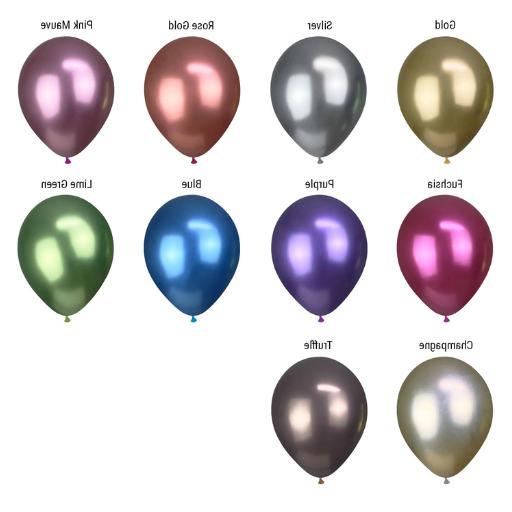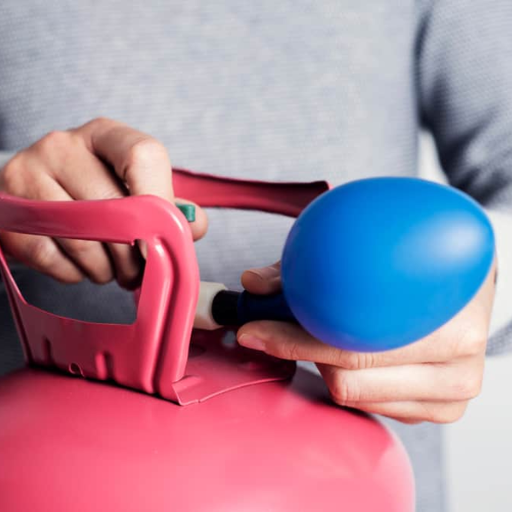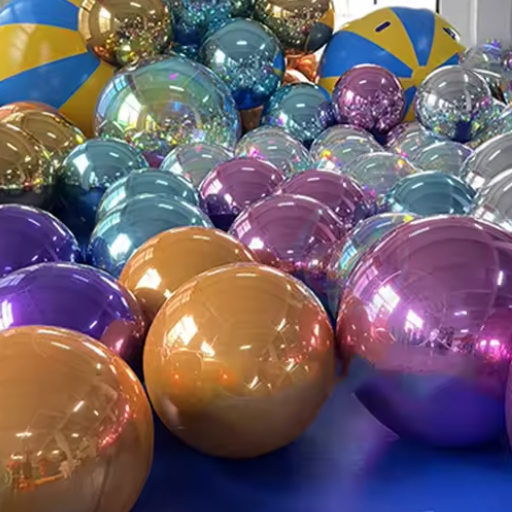Quick Answer: Under normal conditions, a standard helium-filled rubber balloon floats for about 8 to 12 hours. However, this duration can be extended to several days using Hi-Float treatment, and varies significantly based on balloon material, size, and environmental conditions.
While planning a party, helium-lifted latex balloons are often the center of fun and festivities. Bright and playful as they are, the question always comes up—how long will they last? The float time of helium-filled latex balloons can vary significantly due to numerous factors that most of us rarely consider. This article sheds light on the science and practicalities behind helium balloon longevity, allowing you to optimize your venue decoration.
Global helium balloon market value in 2022
Expected CAGR growth until 2027
Float time increase with Hi-Float treatment
The Popularity of Helium Balloons

Helium balloons have always been a classic choice for celebrations, events, and decorations. Their appeal lies in their ability to brighten up any ambiance with vibrant colors, versatility, and the pure joy they bring. The demand for helium balloons has grown consistently over the past five years, according to Google’s search trend studies, with increasing searches for:
- Helium balloon decorations
- Helium balloon delivery
- Party helium balloons
This growing demand stems from the need for unique party décor, corporate event decorations, and personalized balloon bouquets for special occasions such as birthdays, weddings, and anniversaries. Creative arrangements using helium balloons range from arches and garlands to themed displays that add either elegance or whimsy to any event.
Key Factors That Determine Balloon Longevity
Critical Considerations for Maximum Float Time
- Balloon Material: Latex vs. foil construction significantly impacts duration
- Size Matters: Larger balloons hold more helium and last longer
- Environmental Conditions: Temperature, humidity, and sunlight exposure
- Hi-Float Treatment: Special gel coating can extend float time up to a week
- Proper Sealing: Quality of balloon closure affects helium retention
Balloon Material Quality: Natural vs. Synthetic Latex
| Parameter | Natural Latex | Synthetic Latex |
|---|---|---|
| Source | Rubber tree sap | Petroleum-based chemicals |
| Durability | 15-20 years | 6-10 years |
| Eco-Friendliness | Renewable, biodegradable | Non-renewable, not biodegradable |
| Cost | Higher upfront cost | Lower upfront cost |
| Allergen Risk | Latex protein allergy risk | Chemical sensitivity risk |
| Environmental Impact | Carbon-negative production | High carbon footprint |
Environmental Impact on Balloon Performance

Environmental conditions have a significant impact on helium balloon durability. Here’s how different factors impact balloon longevity and strategies to mitigate them:
Temperature Effects
- Extreme Heat: High temperatures expand helium, increasing internal pressure and burst risk—store balloons in cool, air-conditioned environments.
- Cold Temperatures: Cold contracts helium, making balloons appear deflated. Warming them allows the helium to expand and the balloons to regain their shape.
- Rapid Temperature Fluctuations: Sudden changes cause rapid expansion/contraction, stressing balloon material.
Other Environmental Factors
- High Humidity: Weakens natural latex material, making balloons more prone to popping or sagging
- Direct Sunlight: Prolonged UV exposure degrades latex, making balloons brittle and faded
- Sharp Objects: Can puncture balloons instantly, causing immediate deflation
Helium Quality and Inflation Guidelines

💡 Pro Tip: Helium Purity Matters
High-purity helium (99.99%) ensures maximum lifting capacity and longevity. Lower-grade helium with oxygen and nitrogen impurities can reduce float time significantly.
Optimal Inflation Guidelines
- Latex Balloons: Fill to 90% of maximum capacity
- Foil Balloons: Fill to stated size parameters
- 11-inch Latex Balloon: Holds approximately 0.5 cubic feet of helium
- 17-inch Foil Balloon: Holds approximately 0.15 cubic feet of helium
Average Lifespan by Balloon Type and Size
| Balloon Type & Size | Float Time | Key Notes |
|---|---|---|
| 9-inch Latex | 8-12 hours | Smaller size limits helium capacity |
| 11-inch Latex | 12-24 hours | Standard size, moderate float time |
| 16-inch Latex | Up to 30 hours | Larger size significantly increases float time |
| 18-inch Foil | 2-5 days | Non-porous material prevents helium leakage |
| 36-inch Giant Latex | 2-3 days+ | Maximum helium storage, ideal for long events |
Professional Tips to Extend Balloon Life

🎈 Maximizing Your Balloon Investment
1. Using Hi-Float Sealant
Hi-Float is a liquid plastic that creates an internal coating inside latex balloons, preventing helium atoms from escaping through tiny pores. This treatment can extend float time up to 25 times longer than untreated balloons.
Hi-Float Application Process:
- Insert the Hi-Float pump nozzle into the balloon
- Deposit recommended amount (0.4g for 11-inch balloon)
- Spread the solution evenly inside the balloon
- Inflate with helium and securely tie off
2. Proper Inflation Timing
- Inflate balloons 1-2 hours before your event
- Maintain room temperature between 68°F-72°F (20°C-22°C)
- Avoid high-humidity areas during inflation
3. Storage Best Practices
- Keep balloons away from direct sunlight
- Avoid fans or air conditioning drafts
- Use quality balloons designed for helium retention
- Choose larger balloon sizes for longer events
Indoor vs. Outdoor Storage Comparison
| Parameter | Indoor Storage | Outdoor Storage |
|---|---|---|
| Temperature | Stable, controlled environment | Fluctuates, can cause expansion/contraction |
| Humidity | Low, prevents balloon degradation | High humidity accelerates latex breakdown |
| Sunlight Exposure | Minimal, preserves balloon color | Direct sunlight fades colors, causes popping |
| Wind Impact | None | Balloons may blow away or deform |
| Longevity | Longer-lasting | Shorter lifespan due to environmental factors |
| Setup Timing | Flexible | Morning setup to avoid midday heat |
Latex vs. Foil Balloons: Complete Comparison
| Parameter | Latex Balloons | Foil Balloons |
|---|---|---|
| Material | Natural rubber, biodegradable | Mylar (polyester), non-biodegradable |
| Durability | Shorter lifespan, prone to popping | Longer-lasting, less prone to popping |
| Float Time (Helium) | 12-24 hours | Weeks to months |
| Float Time (Air) | Several days to a week | Not applicable |
| Cost | Affordable, ideal for bulk purchases | Expensive, better for small quantities |
| Shapes Available | Basic shapes, customizable with twisting | Intricate shapes like stars, letters, numbers |
| Environmental Impact | Biodegradable, eco-friendly | Non-biodegradable, but reusable |
| Best Use Cases | Short-term events, vibrant decorations | Long-term events, photo-worthy displays |
| Customization Options | Logos, messages, simple designs | Detailed designs, photographic images |
Why Choose Foil Over Latex?
- Extended Longevity: Foil balloons maintain helium for days or weeks vs. hours for latex
- Weather Resistance: Better performance in temperature changes and humidity
- Reusability: Can be deflated and reused multiple times
- Custom Design Options: Superior printing capabilities for complex designs
- Professional Appearance: Shiny, reflective surface for premium look
Environmental Considerations

🌱 Eco-Friendly Balloon Choices
Biodegradability Facts:
- Latex Balloons: Made from natural rubber, degrade in 6 months to 4 years
- Foil Balloons: Polymer with metallic coating, minimal biodegradation
Wildlife Impact:
- Both balloon types can harm wildlife if not disposed of properly
- Animals may ingest balloon fragments or become entangled
- Latex balloons pose higher risk as they resemble food when deflated
Sustainable Alternatives:
- Fabric bunting and garlands
- Paper decorations
- Reusable decorations made from wood or felt
- Air-filled balloons instead of helium (for non-floating displays)
References
-
University of Illinois Physics Van: Helium Balloon Leaks
This article explains the science behind helium leakage in latex balloons and their typical lifespan. -
University of California, Santa Barbara – ScienceLine: Helium Balloons and Deflation
This source discusses why helium-filled latex balloons deflate quickly and the science behind it.
Frequently Asked Questions
Conclusion
Understanding the longevity of helium balloons is essential for successful event planning. While standard latex balloons provide 8-12 hours of float time, proper preparation and treatment can significantly extend their lifespan. Key takeaways include:
- Hi-Float treatment can extend balloon life up to 25 times longer
- Environmental factors like temperature and humidity significantly impact duration
- Foil balloons offer superior longevity for long-term displays
- Proper inflation timing and storage are crucial for maximum performance
- Consider environmental impact when choosing between balloon types
Whether you’re planning a birthday party, wedding, or corporate event, these insights will help you make informed decisions about balloon decorations that will maintain their appeal throughout your celebration.
🎉 Final Pro Tip
For optimal results, combine Hi-Float treatment with proper sizing (select larger balloons), controlled environment storage, and high-quality helium. This combination will provide you with the longest-lasting and most impressive balloon displays for your special events.









